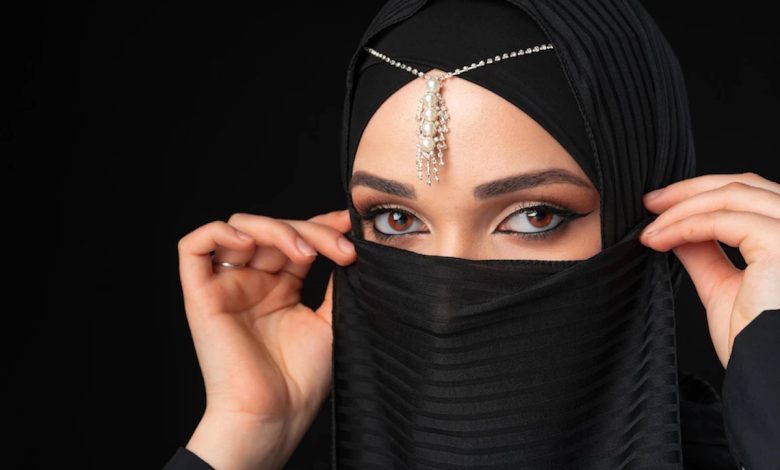Worst Countries For Women Rights: 10 Of The Worst Countries For Women’s Rights!

We’re also faced with reminders of the gender inequalities that persist around the world, both the obvious — such as gender-based violence — and the more subtle norms and beliefs that fuel generations of imbalance. The Women, Peace and Security Index, co-published by Georgetown University and Oslo’s Peace Research Institute, measures women’s rights through levels of inclusion in society, representation in the justice system, and feelings of security, at home, in their community, and within conflict settings.
The United Nations’ Gender Inequality Index touches on similar data points, such as the number of years of education a woman receives and women’s representation at a political level, as well as rates like maternal mortality, early marriage and teen pregnancy.
Worst Countries For Women Rights, Using these two sets of data, we’ve compiled 10 of the worst countries for women’s rights. We also detail some of the issues unique to each context, issues that Concern is working to address through its programming in each country.
ALSO READ: Traditions From Around The World: 10 of the Strangest Traditions from Around the World!
10. Pakistan
There’s some debate between the 2021 WPS Index and the 2020 UN Gender Inequality Index as to Pakistan’s place when it comes to women’s rights. The latter ranks the country 135th out of 162 — not a clean bill of health, but not one of the top ten or even top 25 worst countries for women’s rights. The Women, Peace, and Security Index, however, ranks the country as 167th out of 170.
Worst Countries For Women Rights, It cites low levels of financial inclusion for women (7%), just under four years of schooling, an employment rate of just over 21%, a largely discriminatory set of social norms and legal frameworks, and high incidences of intimate partner violence.
Worst Countries For Women Rights, The WPS notes that part of its low ranking for Pakistan lies within the discrepancies between women’s rights at the province level.
The lowest-ranking provinces in the country performed almost four times as poorly as the highest-ranking provinces, disparities that, as the WPS says, ‘national averages conceal’. WPS links this to the income and poverty rates within provinces, suggesting the link between extreme poverty and gender inequality.

9. Central African Republic
Worst Countries For Women Rights, Conditions for women have improved somewhat in the Central African Republic, mainly thanks to a decrease in organised violence that improved a sense of community safety in the 2021 WPS Index.
However, there is still a lot of work to be done. Women in CAR generally only have three years of schooling, and their representation in local parliament is less than 9%. What’s more, while organised violence has gone down, one in five Central African women still faces violence at the hands of an intimate partner.
There are other indicators of and barriers to women’s rights in CAR. Harmful gender practices like early and forced marriage mean that 61% of women aged 20-14 were married or in a union before their 18th birthday. Women of reproductive age are also restricted in terms of their sexual and reproductive health and rights. According to UN Women, in 2019, just over a quarter of women in CAR were able to access modern family planning resources.
8. Somalia
Somalia ranks twelfth on the 2021 WPS Index, and while it has greater political representation for women than CAR (23% of Somalia’s Parliament is female), the number of women in the workforce is drastically lower (23% compared to 68%). In some cases, the indicators to meeting the Sustainable Development Goal of gender equality in Somalia are incomplete, with worrisome gaps in reporting on women’s access to assets (including land ownership rights), harassment and violence against women, and the gender pay gap.
Worst Countries For Women Rights, Other indicators that the United Nations reports on do not suggest positive results in these areas. More than a third of Somali women ages 20-24 were married before they turned 18, and only 2% of women in the country were able to access safe and modern family planning and birth control resources. This has led to one of the highest maternal mortality rates in the world: for every 100,000 live births, 829 Somali women will die.

7. Sierra Leone
Even higher than Somalia’s maternal mortality rate is Sierra Leone, where 1,120 women out of every 100,000 will die due to complications from pregnancy or childbirth. This has been a longstanding issue — one that Concern has addressed in part through our project, Innovations for Maternal, Newborn, and Child Health (2009-2016). While many in the country are pushing to overturn outdated and outmoded gender norms, crises have interrupted progress, such as the 2014-16 Ebola epidemic leading to an increase in unplanned teen pregnancies.
Worst Countries For Women Rights, While Sierra Leone has enjoyed relative peace for the last 20 years, gender-based violence is still a fact of life in many areas. According to the WPS Index, only 45.8% of Sierra Leonean women feel safe walking home at night in their communities.
Most women also receive fewer than three years of an education, where school-related GBV is also an issue. (Concern is currently working to address this with the development of a Safe Learning Model.) Likewise, female genital mutilation (FGM) is common among 90% of women and girls ages 15-49.
6. Sudan
The summer of 2019 brought several advances in women’s rights to Sudan, including the criminalisation of FGM; the repeal of laws restricting women’s rights in terms of what they wore, where they could go, and what they could do for work; and a target of 40% female representation in the country’s transitional parliament.
This is a promising advancement for the country, though progress may be delayed given the COVID-19 pandemic. In 2021, the WPS Index noted that only 22% of parliament was female-led (although this is already a significant step forward).

5. Chad
Of the 162 countries ranked on the United Nations’ Gender Inequality Index for 2020, Chad ranks 160. Chad passed its Reproductive Health Law 20 years ago, which has led to a significant decrease in practices like FGM. However, early and forced marriage is still common — one report conducted by Concern in 2015 showed that the median age for a first marriage was 16 for girls and 22 for boys.
Worst Countries For Women Rights, In one focus group for this report, a participant noted: “Early marriage is a custom in our community, but a real danger for the girl: pregnancy, surgery, death, and also several cases of running away.”
Since that report, we’ve seen numbers like the percentage of women reporting intimate partner violence drop. However, there’s still a lot of work to be done, especially around education, where women complete less than two years of school, and in political representation. Chad also has the second-highest maternal mortality rate in the world, with 1,140 deaths for every 100,000 live births.
4. Democratic Republic of Congo
The Democratic Republic of Congo ranks 163 out of 170 on the 2021 WPS Index and 150 out of 162 on the UN’s 2020 Gender Inequality Index. Progress on gender equality in the DRC has been slow, with inequalities existing across all sectors. Many of these discrepancies exist at the legislative level, with the WPS estimating 25% of DRC laws having some level of bias towards men.
An estimated 51% of women in the DRC will experience violence from an intimate partner in their lifetime; 37% have reported so in the last 12 months. 37% of Congolese women also were married before their 18th birthday, and for every 1,000 girls in the DRC, 124 will become mothers between ages 15 and 19. These numbers are reflected in the education discrepancy between genders: men are almost twice as likely as women to go beyond primary education in the DRC — 65.8% of men versus 36.7% of women.

3. South Sudan
Harmful gender norms as a result of a patriarchal culture have left women in South Sudan excluded from decision-making and political activity. Women have few decision-making powers within the household. A lack of resource ownership and land rights is at the heart of power imbalances between the genders; less than 5% of women are financially included within their communities and society.
Worst Countries For Women Rights, In 2020, the United Nations did not have enough data to accurately rank South Sudan on its Gender Inequality Index, although it did report that the country has the highest maternal mortality rate in the world — more than one out of every 100 pregnant South Sudanese woman will die due to complications from that pregnancy or subsequent childbirth.
The 2021 WPS Index works with a bit more data on South Sudan, enough to rank it 165th out of 170 countries for women’s rights and security. A longstanding conflict in the country makes it less safe for women both in their communities and with their domestic partners — one in four South Sudanese women have reported intimate partner violence.
2. Syria
Before war broke out in 2011, gender dynamics in Syria were traditionally patriarchal. Women only gained the right to vote in national elections in the mid-1950s, and, while they were allowed to work, they made up a small percent of the pre-war workforce.
Worst Countries For Women Rights, Many Syrian women, particularly in the country’s then-thriving middle class, opted to stay at home and raise families — which aligns with the fact that marriage in the country is still seen as a contract between the husband and the wife’s father. It was only in 2020 that the country criminalised honour killings.
A protracted crisis has exacerbated many of these gender norms, while also introducing many of the gendered complications that come with conflict. One of the reasons Syria ranks so low on the WPS Index owes to ongoing conflict, in which 75 out of every 100,000 women are killed in organised violence and only 16.9% of women feel safe in their own communities.
Georgetown University qualifies the number of conflict-related incidences of sexual violence as “massive”, and records that nearly 25% of Syrian women have reported experiencing violence from an intimate partner. Syria performs slightly better on the UN’s Gender Inequality Index; however some of the determining factors — including years of education between men and women — are a bit skewed, as conflict has prevented an entire generation of Syrian girls and boys from having a basic education.
1. Afghanistan
Afghanistan ranks last out of 170 countries on the WPS Index and 157th out of 162 on the UN Gender Inequality Index. More than four decades of conflict and crisis combined with regressive gender norms have left many Afghan women and girls uneducated — those who are allowed to attend school generally don’t stay for more than two years.
Worst Countries For Women Rights, This reflects in financial inclusion for women in the country; which the WPS ranks at just 7.2%. The country also ranks among the highest for gender-based violence, with 35 out of every 100 women reportedly exposed to violence at the hands of an intimate partner. Along with neighbouring Pakistan, honour killings are illegal here, but still widely prevalent.
Why Travel Is Good For You: 17 Reasons Why Around the World Travel is Good For You




